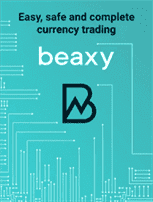Build A Mobile App Without Coding With These 9 Platforms
Содержание
You can get started with a free account and upgrade later when you’re ready to publish your app. Though our ToDo app is almost finished, shipping a mobile app is not a fast process. Publishing an app on either the Google Play Store or the Apple App Store can take a long time. Your app needs to get reviewed before it reaches your customers, and bugs cannot always be fixed immediately.
As mentioned earlier, our app needs user management because it stores the user’s personal data — the many lists of ToDo items the user cares about. A user account helps control access to user data and provide a personalized user experience, which significantly increases the usage of a mobile app. And importantly, because of the personal data, the account-based approach is the way forward to monetize the app in the future.

For our app, it adds the capability to describe different data models like a ToDo item, a list of ToDo items, or a project of multiple lists of items. There is no need to write code for modelling the data on the device or in the API; the code is generated, which speeds up the development of the app. For our app, we recommend using React Native and the built-in components to create a cross-platform mobile application.
Once you’ve set your goals, it’s time to validate the market need for your app. Determine who your competitors are and what they offer their customers. Doing market research before you begin development helps you identify the feature sets that will meet your users’ pain points and the market opportunity. By doing your homework up-front, you save time and money and have a laser focus to build what will provide the most value. Their intuitive mobile app builder services are tailored specifically for small business owners. If you’re a busy business owner, don’t know much about code, and need a mobile app – AppInstitute has plenty of enticing features to help you out.
Building A Mobile Application
Want to create a place where your users can all hang out together? Whether the data is user-generated or provided by content creators, the success of an app depends on the management of that data. Not only lists of things that need to be done, but also how fast they are done, the priority, and perhaps a prediction of when items on the list are finished. This is essential because it will enable our customers to be as productive as possible, no matter which device they use or where they are.
And, likewise, understand your budget options for the foreseeable future. While some platforms can be costly, you have to remember that custom mobile app development can cost upwards of $50,000 or more. If you have ever tried to learn to program, you’ve likely heard of the platform Scratch before.
There is no waiting for your app to be delivered to the phone network as the solution is based on web technology. As you make an adjustment, every phone is updated immediately. AppLite also offers an portal which you can update anytime and from any computer. With AppLite you are able to build loyalty and trust with your customers. One of the reasons why Andromo is so successful is because of its native integration with socially-oriented design elements.

The platform uses a “blocks-based” interface for building apps and learning to program along the way. Thunkable seems to have inspired itself a lot from the approach of Scratch, as their main interface for building mobile apps is remarkably similar. With Adalo, you have the How to build a mobile app freedom to add database configuration and interactions automatically. If you have an existing API, then Adalo will integrate with the same. With a single click, you will be able to launch the true version of your mobile apps on the application stores for Android and iOS.
Greenville Sc App Development Company
The Professional plan goes up to $149 per month and offers additional features like in-app purchases and push notifications. And finally, you have the Enterprise plan at $499 per month, including all of BuildFire’s features. Their powerful theme engine offers a library of UI components so you can mix & match different components to use them together, and it’s actually https://globalcloudteam.com/ powerful. Furthermore, you can integrate any API using their REST integration wizard and also use pre-built integrations. Once you are done with your application, you can ship it with a single click and then release it to make it available for users. Features like Analytics, Auto-publish, User management, and more allow you to streamline app maintenance post-launch.
The apps listed here in this post exemplify that sentiment perfectly. And, the great news is that this technology is going to continue evolving. Expect more and more mobile app builders to support third-party integrations, which will make it more useful to create dynamic apps. Whether you’re building a music library or a travel directory – Andromo strives to give you the necessary tools to do so. On top of that, each mobile application you create with Andromo is generated in the Native Android code. And can be published on the Google Play store without much hassle at all.

Furthermore, BuildFire customers can choose one of more than a dozen templates to accelerate the application building process drastically. When you start building a mobile app, it’s easy to get caught up in the excitement. But it’s important to stay focused on your minimum viable product and the key set of features that offer the highest value to your customers. Your MVP is a tool that allows you to iterate, integrating your learnings into the app through multiple waves of development.
How To Build A Mobile App
It also needs push notifications so that users can be reminded of pending tasks, and, last but not least, it needs to be well tested. As you’re building the app, you’ll want to do additional planning for pre-launch. You may have already considered things like your monetization strategy and the KPIs that you want to track, but now’s the time to start making it a reality. Create a landing page to begin sparking interest in the app before launch, and plan your social media strategy. You can plant the seeds of interest before your app is available, giving you a jump start. First, you’ll want to perform quality assurance to ensure all of the features work as expected.
Adalo does just that by helping you design new apps and turn them into reality with simple steps. Gone are the days when you needed any developer essentially for designing and development. You will be capable of completely controlling your design by using drag-and-drop components. Several factors come into play when thinking about building a mobile app for your business. It doesn’t only help store the data; it also enables the data to be synced between different devices of the user.
AppLite is a Mobile app development solution that allows anyone to build, manage and distribute their own web apps. Every mobile app you build with this platform will start through a selection of plugins and widgets. The plugins cover all major areas of functionality and tooling for specific mobile applications. E.g., If you want to build an eCommerce app, you can choose between Shopify, Square, PayPal, and other integrations. Create an app for mobile devices with GoodBarber with an App builder, making your work more accessible and convenient.
Appypie
It doesn’t matter if they are at work, at home, or on the move. You will get a dedicated URL from AppLite, which allows you to share with your community via Facebook, Twitter, or the web. AppLite will also provide you with an automated weekly email with statistics about the use of your apps. Managing projects, tasks, resources, workflow, content, process, automation, etc., is easy with Smartsheet.
Also, there are thousands of different devices, each with a different screen size, operating system, operating system version, and hardware capabilities. Now our ToDo List app can sync the data between devices and securely store it in a scalable database, and the users can create new items in any network condition. Beyond the command line tool that comes with AWS Amplify, it provides libraries for iOS, Android, and JavaScript. These libraries enable you to set up and use essential services in any mobile app. These providers also offer a full CMS solution which allows anyone to then manage their entire mobile web app.
- With thousands of Smart phones being activated daily, it highlights that the mobile phone will soon become more used than computers in the near future.
- So, naturally, one has to question the potential of a mobile app-building service.
- As you’re planning, consider how you’re going to fund the app development.
- Every week we share trending articles and tools in our newsletter.
The above example showcases how you can incorporate an entire YouTube channel inside your mobile app. And, rather than adding new videos manually, the app will dynamically update the video list in real time. And the more complex a mobile app you need, the pricier it will get in the long term. As such, looking for ways to build your own mobile app on your own time might be a sound alternative.
The services the app leverages are built to be secure and scalable, and you stay in full control of them. You can move fast and inherit the best practices from AWS Amplify, and you can also customize the services as your business grows. And, of course, there are many other benefits and features you can incorporate. So, to learn more, we’re going to recap the best mobile app builders on the market today. You might be surprised just how capable such builders are and how many millions of people are building mobile apps this way. The fastest way to build a great mobile app is with the easy-to-use tools and comprehensive, scalable services on the AWS Cloud.
Let’s Build Together
The reason is that you couldn’t build anything more than a static app; without dynamic features. In this article, we walk through the tools and services AWS offers to help startups build apps that have a strong technical foundation. Whether you’re building your app internally or working with a development company, you’ll want to have a roadmap.
Andromo helps you in this department through its own advertising network and that of AdMob. One of AppInstitute’s successes is how easy it makes to build a mobile app for your business needs. The entire process is condensed into four short steps while giving you plenty of opportunity for customization. The above image shows the interface you’ll be working with most of the time.
Do Market Research
This means that it has a shared codebase and works on both iOS and Android. This cross-platform ability speeds up the process to get the app to market. The app needs offline functionality in case users encounter rough networking conditions.


